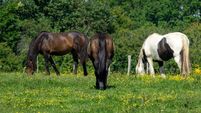Ireland hopes to weather the challenge from eastern Europe
The “new” EU member states will form the most dynamic region for the next five to ten years, according to Rabobank’s research division.
It’s also significant that Rabobank is one of the five banks in a syndicate which has put in place a new five-year loan facility which will support Dairygold Co-Op’s post-quota expansion ambitions, to the tune of €150m.










